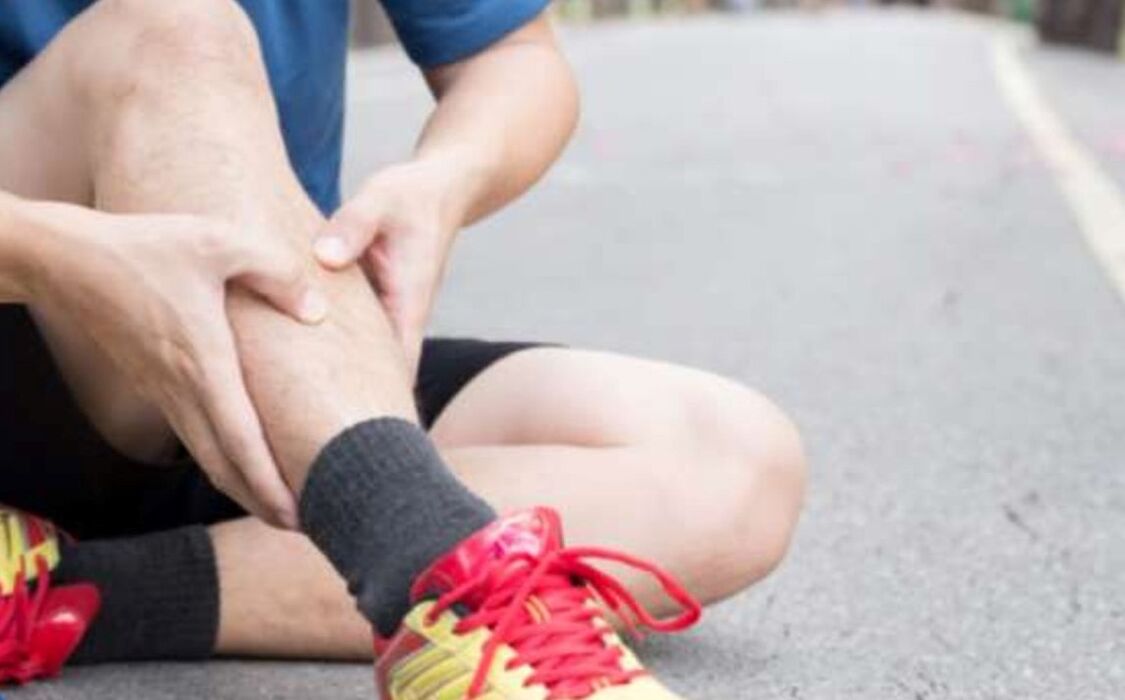Varicose veins are traditionally considered a "female" disease. However, this opinion is wrong, men also suffer from varicose veins. In addition, they bravely endure manifestations and turn to doctors quite late, when the disease is already in an advanced stage, and this is not surprising: men do not worry so much about the visual consequences of varicose veins - spider veins, protruding veins - and few knowthat the disease may progress to the stage of food ulcer.

Varicose veins begin long before the twisted, dilated veins in the legs appear. This is a process that can go ahead and have a prolonged (chronic) course. Venous blood, which must flow from the bottom to the top of the legs and carry metabolic products, stops in the vessels. There are valves inside the veins that prevent blood from flowing back. As the disease progresses, the valves in the veins stop closing completely and part of the blood flows in the opposite direction. Due to the excessive accumulation of blood, the walls of the veins swell, become red. Blood circulation is reduced, edema, pain occurs and there is a feeling of heaviness.
If left untreated, varicose veins can lead to complications: thrombophlebitis (inflammation of the walls of the veins with the development of blood clots), dermatitis, food ulcers - open wounds that do not heal with a risk of infection. In some cases, complications of the disease can lead to disability. Varicose veins are not just a lesion of the veins in the legs, an equally serious problem for the man is the expansion of the pelvic veins. In particular, it can contribute to other problems, such as hemorrhoids.
What contributes to the development of varicose veins:
The main factors that affect the development of varicose veins are considered sedentary lifestyle, sedentary work, overweight. Irrational diet also plays an important role. For example, due to the consumption of large amounts of meat dishes, spicy, starchy, low-fiber foods, chronic constipation can develop, which increases the stagnation of blood in the veins of the pelvis and legs. The effect of alcohol is significant: alcohol consumption causes excessive relaxation of the venous wall. The veins with varicose veins are already stretched and alcohol enhances the negative effects and contributes to the progression of the disease.
Signs of varicose veins:
- vascular networks or telangiectasis;
- dilated, twisted veins or varicose veins
- skin discoloration, dryness, thinning.
More specific symptoms that indicate the development of varicose veins can be:
- feeling of fullness and heaviness in the legs.
- pain in the muscles of the calf
- itching, burning, tingling and even night cramps.
- fatigue;
- a symptom of restless legs.
How to treat varicose veins
The treatment of varicose veins must be complete: a doctor chooses a treatment plan. It is recommended that you adjust your lifestyle. Veins Health Benefits:
- physiotherapy;
- walking;
- swimming;
- endurance ski
- cycling.
To help the blood flow more actively in the veins, it is useful to massage the buttocks, thighs, legs and feet. It should be light caressing and shaking the muscles (from the buttocks to the leg), without affecting the areas of the dilated veins themselves. The duration of the procedure is 5-10 minutes daily.
An important part of the treatment is given to special drugs that improve the tone of the veins - bentons.
The Venetian ones are local and systematic
For example, local or external, it is a preparation that contains three ingredients, which, thanks to an innovative system of delivery of substances, penetrate quickly into the skin and help fight the heaviness of the feet and their swelling, leaving no sticky feeling and marksin clothing and leather. . .
As a rule, topical treatments are recommended to be used together with systemic bentonics (those taken orally, in tablets). It works at any stage of the varicose veins, acts on the cause of the varicose veins from the inside and helps to treat the pain and swelling in the legs. The drug is convenient to use: only 1 tablet 1000 mg per day.
Varicose veins are a sexually transmitted disease. It should be treated as soon as possible, starting with the first signs of the disease. Approaches include lifestyle changes, wearing special compression stockings (for men, there are comfortable knees) and the use of medication prescribed by a doctor.














































